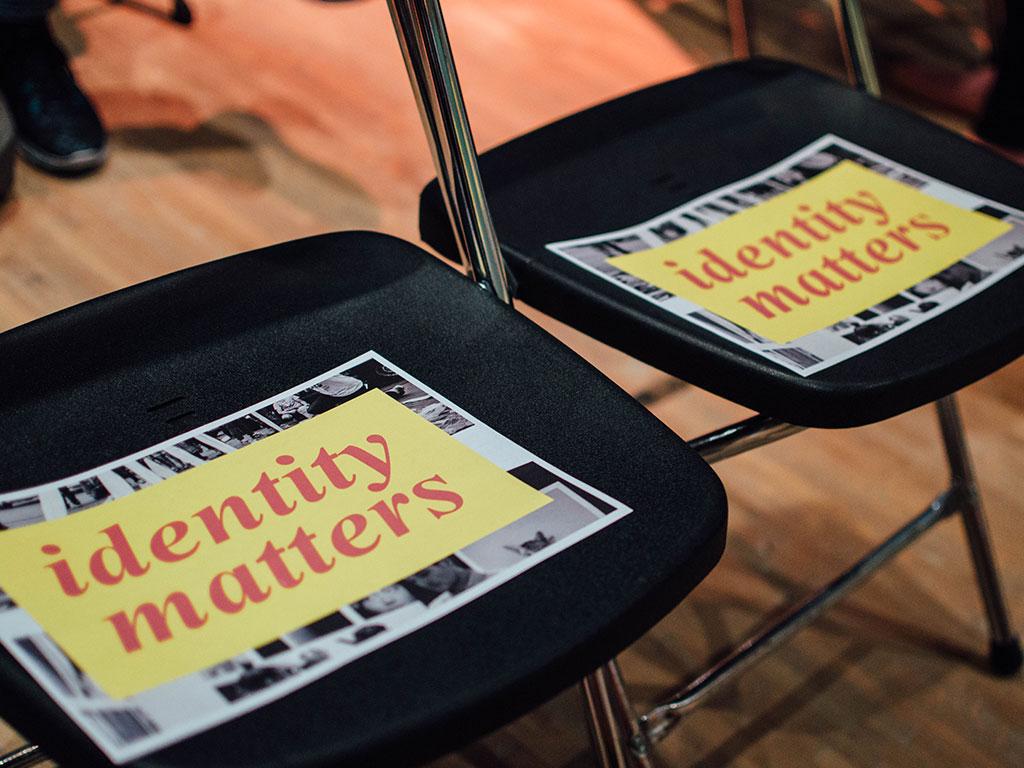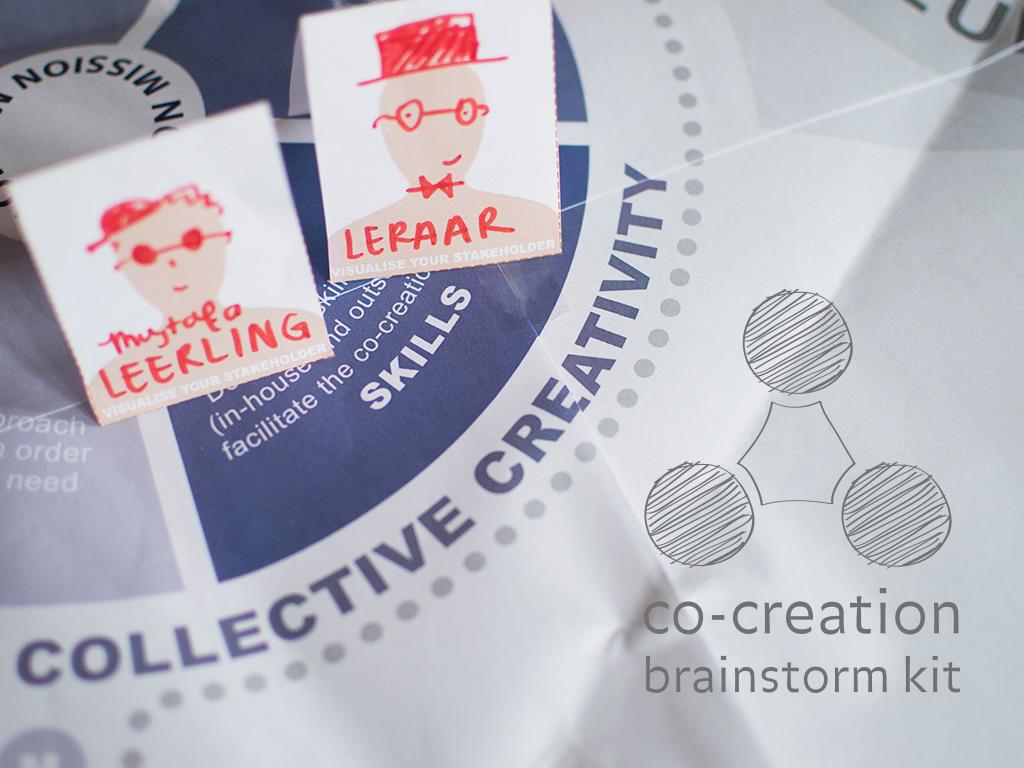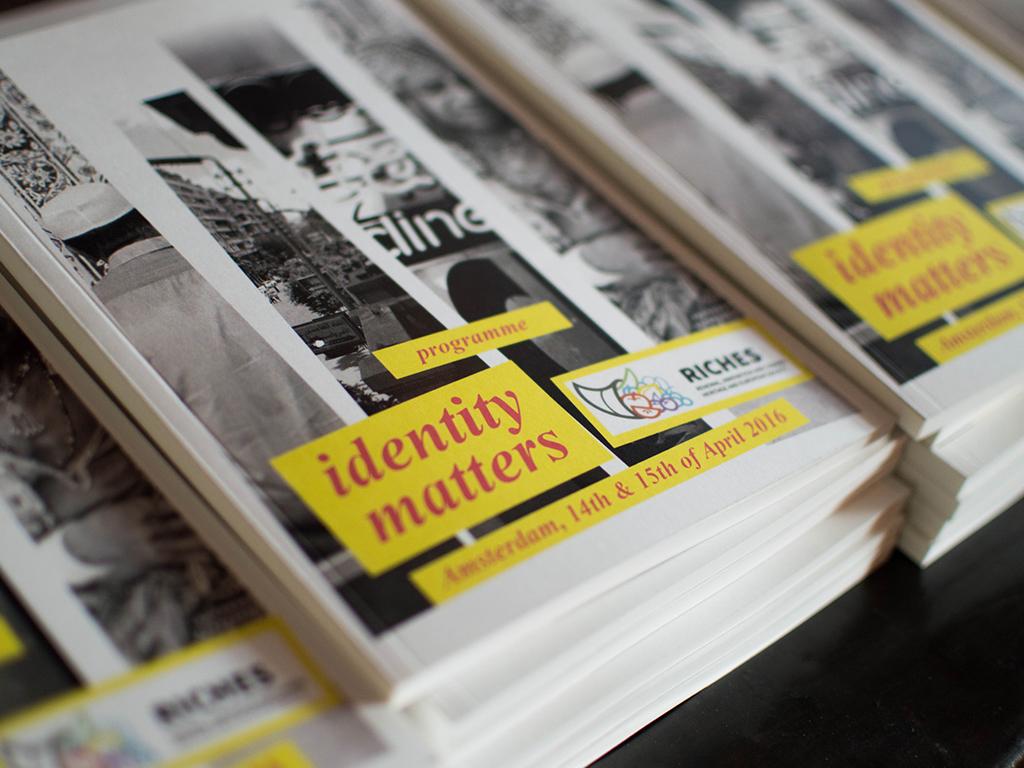This blogpost is a co-creation article written by Robin van Westen & Dick van Dijk (Future Heritage Lab)
The Identity Matters conference was a success, with more than hundred visitors, nineteen speakers and eight urban visits throughout Amsterdam. In case you weren’t there, here are some insights into the keynotes and conversations.
The conference was the closing event of the RICHES project, which focuses on change and heritage, revolving around the question how to recalibrate relationships between heritage institutions and audiences. The speakers all formed a constructive and positive force in this dynamic, as they utilise heritage and the arts to build, to help, to include, to reflect, to innovate.
Day 1 | the importance of identity
The different keynotes on the first day addressed several narratives relating to how we look at the world, and how heritage institutions are important factors in the narratives we use to create our identity. Judikje Kiers, director of the Amsterdam Museum, advocated the importance of cultural sensitivity and the role of co-creation in working in a city as culturally divers as Amsterdam; inclusivity through heritage is a central theme in the Amsterdam Museum. Next Abhay Adhikari, digital storyteller and director of Dyhaan, argued that the heritage sector should take an active role in creating a social, value driven ecosystems that offer people the opportunity to discuss, debate and critically engage with issues that affect our contemporary lives. In his practice he uses different participatory models exploring how to create positive social impact for and with audiences.
Waag’s Marleen Stikker moved the discussion towards the technological domain where identity often is reduced to a token of transaction. She questioned how humanities and the arts both can be meaningful and critical players to put ourselves back in the centre of this discussion. Tarik Yousif closed the morning sessions zooming in on both the white man’s view of the world and contemporary orientalism among young multicultural groups.
Day 2 | How matters of identity permeate all things of life
Time to see identity from a different perspective. This day was all about how our identities are shaping the world around us, consciously or unconsciously. Amongst others architect Pnina Avidar, from 12 PM architecture, spoke about how Dutch culture is a culture encrypted in the ground: she referred to the Dutch landscape as a time machine. It reflects what the Dutch needed in different periods of time and because of that flexibility it is resilient.
Dutch designer Ruben Pater argued that all design is political, but most designers are not (yet) aware of this. With strong examples he showed that no design is neutral, everything is a cultural choice. Razan Nassreddine and Robert Winkler talked about the Multaka project, in which several Berlin museums work together to train refugees as museum guides.
Exploring the city
In the afternoons we went on several urban visits to explore the context of change in real settings, such as the urban cultures of the Bijlmer (hosted by Imagine IC), new future oriented scenarios for the Dutch Botanic Gardens (hosted by Planting the Future project), local food and bio movements presented at Mediamatic. For a complete overview of all speakers and visits you can still go the program booklet.
Image of Europe
Running through the conference was an attempt to choose an image that would represent Europe: we talk a lot about what Europe is or should be, but how does it look? This is of course a very difficult question to answer; capturing such a diverse and dynamic concept in one image may seem impossible. But by collecting as many images as possible, we tried to create a patchwork of literal and conceptual meanings of Europe.
Conference participants uploaded and voted for pictures that in some way represented Europe (for them), ranging from refugees sleeping under a bridge, to big crowds at the London Underground, and simply a map. The winning photo of the massive tourist invasions in Venice, the city being overshadowed by a huge cruise boat, was awarded a cake.
#IAMRICHES
Want to see more? A lot of visitors shared their experience on Twitter, Facebook and Instagram with the hashtag #IAMRICHES. The complete conference proceedings will be available online before the end of May 2016. All photo’s of the conference can be found here.
This project has received funding from the European Union’s Seventh Framework Programme for research, technological development and demonstration under grant agreement no. 612789.


